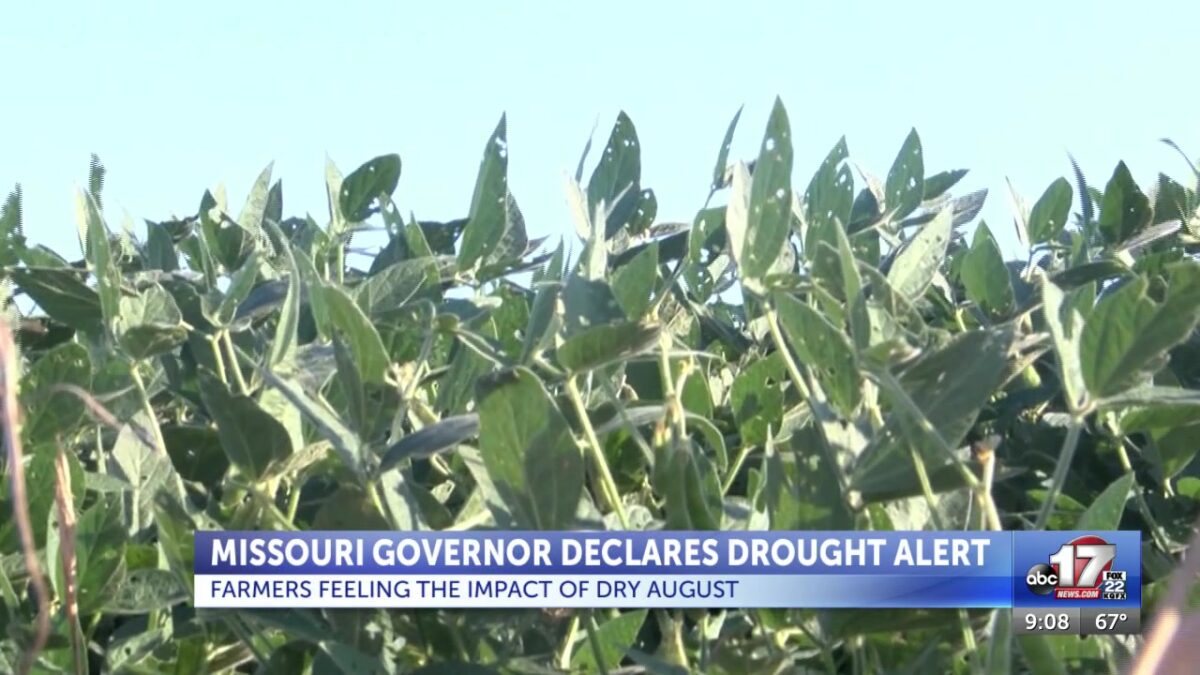Missouri declares drought alert after farmers face dry summer

Mitchell Kaminski
JEFFERSON CITY, Mo. (KMIZ)
Gov. Mike Kehoe signed an executive order on Monday declaring a drought alert in Missouri.
The executive order gives state agencies the authority to direct resources to communities and farmers struggling with dry conditions. The order, which runs through Dec. 1, covers 85 counties experiencing moderate, severe, or extreme drought.
“This executive order allows our state agencies to step in and direct resources to those struggling with the consequences of drought, while allowing for vigilant monitoring of conditions over the next few months,” Kehoe said in a press release. “While much of our state is anticipating rainfall this week, we expect drought conditions to continue impacting agriculture and waterway navigation.”
Kehoe also urged Missourians to report local conditions to help state and federal partners understand the impact.
Across the state, farmers are feeling the effects of the dry summer. Andy Clay, a seventh-generation farmer who grows corn and soybeans near Jamestown, said this year has been especially challenging.
“Things were great starting off this year,” Clay said. “We got some of our crop planted before the wet spring began, and then the rains continued through June and early July. But by mid-July, they just shut off and we entered what they call a flash drought, where we didn’t receive any rain until this past Thursday, any measurable rain to do anything good. Unfortunately, our cattle pastures had already died off or burnt up in lesser quality areas, and it’s been the same with some of our later planted soybeans.”
Clay said the drought will result in lower crop yields.
“We didn’t receive any measurable rain during August and then obviously had typical August temperatures,” Clay said. “So there’s a lot of soybeans out here that are going to have really small beans and fewer beans per pod.”
Despite the challenges, Clay said market factors and input costs will play a bigger role than weather in next year’s decisions.
“Mother Nature is always in control,” he said. “This year’s weather doesn’t always affect next year’s decision-making. The biggest thing affecting decision-making is input prices, how they continue to rise.”
According to the U.S. Drought Monitor, about 5 million Missourians live in areas currently experiencing drought, up 17% from last week. August was the state’s third driest since 1895, with just 1.07 inches of rain compared with the average 2.64 inches. Still, rainfall from January through August totaled 29.52 inches, 1.5 inches above normal.
Adding to the stress is the trade war with China, once America’s top soybean customer, which hasn’t placed a single order.
On April 2, President Donald Trump levied a 34% tariff on all Chinese goods. Two days later, China responded with a retaliatory tariff on all US imports.
The retaliatory tariffs have placed U.S soybean farmers at a 20% disadvantage compared to South American competitors. As a result, China has begun buying soybeans from Brazil, which shipped nearly 16 million tons of soybeans to China in March, its largest monthly volume ever.
“It’s coming back to demand. We’ve got to continue to look for markets that want to utilize the soybean prices. But with lower yields you typically would see increased prices. Clay said. “Unfortunately, next year, if things continue on the pace it is going next year, a lot of the commodity farmers are going to really start feeling the effects of this.”
Clay added that farmers are at the mercy of the elements and the market.
“We can’t control Mother Nature. We’re always at the hands of if she’s going to let us win or suffer,” he said.